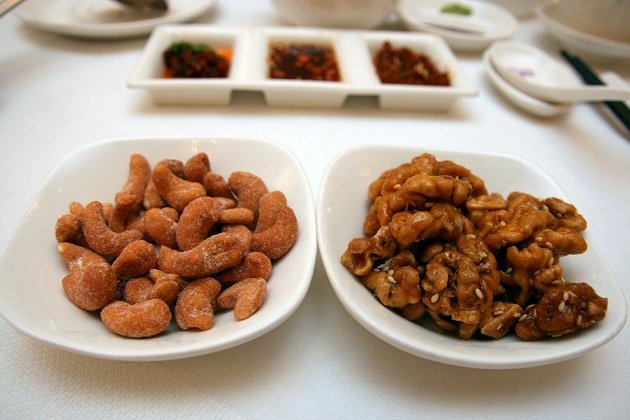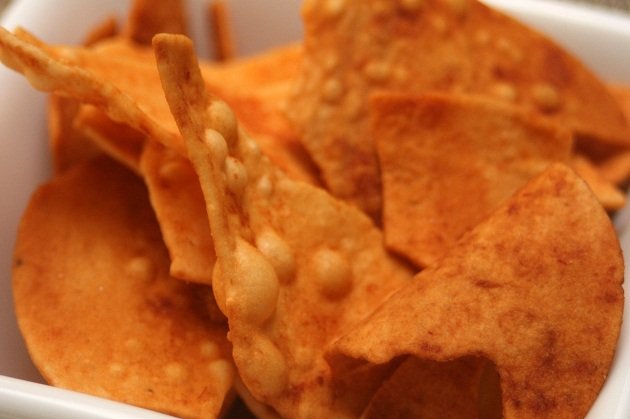
Those Obligatory Appetisers
By Catherine Ling - Monday, Oct 22, 2012
Oh those little plates of peanuts or other snacks that they present you as you place your orders and wait for your food. They show up again too in your bill, most often as “peanuts” or “pickles”. The sum charged is usually small, so most diners will close one eye and let the restaurant pocket the little extra. This is an old and widely accepted practice in Chinese restaurants in Asia, but it still riles some people who do not like being “forced” to pay for something, especially if service charge is already being levied. It is possible to decline these little nibbles, although that’s generally seen as bad form.
Do you mind these “obligatory” appetisers or do you actually look forward to seeing what you might get? Some restaurants take the trouble to vary these daily.

Peanuts in braised or fried form are one of the most common, but some restaurants will offer higher quality nuts like candied walnuts or honeyed cashews. Pickles are also commonly served, like preserved Sichuan vegetables, carrots and cabbages, leeks, or even local achar.
Fried fish skin certainly gets the mealtime going with a savoury crunch. Salmon skin or eel skin with a fragrant soy-based dip certainly goes down a treat.
Sometimes it can be as simple as “keropok” or fish/shrimp crackers. These are always a hit with the kids, no doubt, and helps keep them seated until the main event arrives.
You might also get “kerepek”, the vegetarian cousin of keropok. These are made from root tubers usually – such as tapioca. Dusted with a finely milled spice blend, good tapioca chips can be absolutely addictive.

One of the more unusual items is the dried beancurd roll (found at Man Fu Yuan) – thin slices of tightly rolled beancurd skin that’s been braised and dried. It’s chewy like jerky or bak kwa, and equally full-flavoured, but it’s tofu based.
More often than not, it’s a simple little plate of nibbles that doesn’t require too much effort to make, or can be made in bulk and easily dished out.
Western restaurants also have amuse bouche or a warm basket of bread served to diners; it’s just that the cost is usually discreetly worked into the bill and not listed as a separate charge. This also means you can’t decline the amuse bouche and get its cost thrown out, unlike these peanuts.
Whatever you feel about these obligatory snacks, they can still be interesting openers to the meal. What’s served can also give a clue about how much the restaurant cares to give the diners a pleasant experience. Cheap, outsourced and run-of-the-mill items might hint that profits and efficiency are top priority instead.


